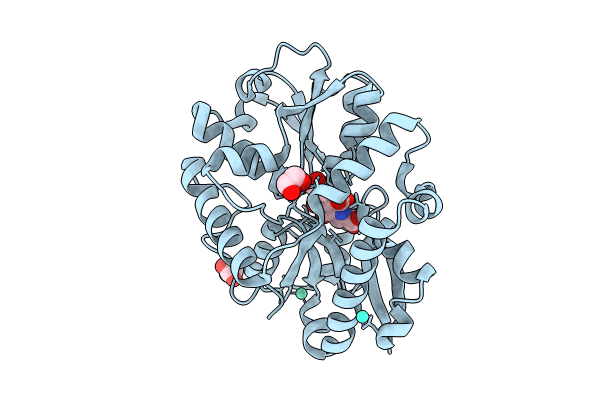
Deposition Date
2024-03-13
Release Date
2024-08-21
Last Version Date
2024-08-21
Entry Detail
Biological Source:
Source Organism:
Methylorubrum extorquens (Taxon ID: 408)
Host Organism:
Method Details:
Experimental Method:
Resolution:
1.55 Å
R-Value Free:
0.18
R-Value Work:
0.17
R-Value Observed:
0.17
Space Group:
P 2 21 21


